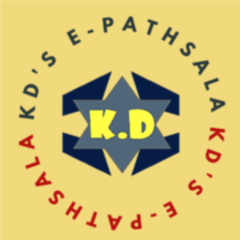Definitions of Co-curricular Activity
“Activities sponsored or recognized by a school or college which are not part of the academic curriculum but are acknowledged to be an essential part of the life of an educational institution. Co-curricular activities include sports, school bands, student newspapers etc. They may also be classed as ‘Extracurricular’ i.e. activities carried on outside the regular course of study; activities outside the usual duties of a job, as extra class activities”- according to The International Dictionary of Education (1977).
“Co-curricular activities were mainly organized after school hours and so were the extra-curricular activities but they are not an integral part of the activities of the school as its curricular work”- according to Aggarwal (2000).
“Co-curricular activities may be defined as the activities undertaken to strengthen the classroom learning as well as other activities both inside and outside the classroom to develop the personality of the child”- according to Bhatia (1996) .
Importance
- These activities are designed to meet the needs of the students and cover a broad / wide range of their abilities and talents.
- Such activities stimulate the interests of the students and provide equal opportunity to all the students to participate.
- These activities enhance the learning experience of the students and help in recognizing and developing their inner skills such as leadership qualities, creative or innovative skills etc.
- Co-curricular and extra-curricular activities give the students a chance to think out of their box and get creative ideas of their own with the help of a guide / facilitator.
- These activities help the students in developing a richer learning experience by giving them a chance to think in new ways to solve a problem or answer a question.
- Students need to take time outs to do more than just studying and co-curricular and extra-curricular activities give them a chance to relax, refresh and mingle easily with others.
- In short, these activities prepare the students practically for their future.
- The normal curriculum teaches and educates the child about academic theories while co-curriculum and extra-curricular activities help the child to apply what he / she has learnt to practice in their practical life.
- These activities help in developing the grasping power of the child and provide an opportunity to the students to work in teams and thus develop team spirit in them.
- Most of the co-curricular and extra-curricular activities are physically active and get the students out their desks to try out new things in a practical way
Types of Co-curricular Activity-
Different types of co-curricular activities for students are as follows:
- Activities for Physical Development: Drill, P.T., indoor and outdoor games, sports, exercise, NCC, athletics, etc.
- Activities for Intellectual Development: School magazine, science club, world affairs society, debates, seminars and discussions, essay and story writing competition, poetry recitation, newspaper reading, etc.
- Activities for Social Development: Co-operative society, scouting and guiding, games and sports, school council activities, celebration of special festivals, conducting morning assembly, etc.
- Activities for Psychomotor Development: Tailoring, carpentry, toy-making, soap-making, candle and incense-stick making, embroidery, knitting, spinning, gardening, sculpture making, leather work, clay work, weaving, book-binding, etc.
- Activities for Cultural Development: Annual day programmes, music and dance, drawing and painting, fancy dress competitions, etc.
- Picnics/Excursions/Tours: Hiking, rock/mountain climbing, visits to museums, zoo, aquarium, planetarium, Nehru science centre, visits to exhibitions, etc. For primary school children, visits to a bank, a post-office, a hospital, a police-station, a garden, LIC office, government offices or mantralaya, an air-port or a sea-port, etc.
- Activities for Development of Civic Values:Celebration of social, religious and national festivals, school parliament election, co-operative stores, cleanliness drive, AIDS awareness programme, drug and liquor/alcohol abuse programmes, World Environment Day celebrations, environmental protection drive, etc
Difference between Curriculum and Co-curricular Activities
- The Curriculum is formal in nature while co-curricular activities are informal.
- The Curriculum involves classroom teaching, instructional education, examination, evaluation while co-curricular activities encompass singing, dancing, gardening, mass drill, community work, games , etc.
- Curriculum comprises reading books, going through newspapers and journals, on the other hand extra-curricular activities known for telling stories, acting, doing theatrical work, singing, etc.
- In curriculum education, students spend their time in the laboratory, workshop, or doing important assignments for class work. But in case of extra-curricular activities, students perform work such as cleaning roads & school, gardening, painting, creative art and so on.
- In curriculum mode of education, students formally read about different festivals, ceremonies and celebrations while in co-curricular activities, the children actively participate physically in these functions.
- The vital difference between curriculum and co-curricular activities is that the latter helps to supplement and complement the curricular teaching.
Advantages
Co-curricular activities can provide students with a lot of interesting and important experiences outside the traditional classroom. There are many advantages to involvement in co-curricular activities, including:
- Allowing students to explore strengths and talents outside of academics.
- Helping students develop stronger time-management and organizational skills.
- Teaching the importance of following through on commitments.
- Giving students the opportunity to build friendships and participate in group activities outside of the tight circle of the regular classroom.
- Helping to build confidence and self-esteem.
- Providing a way to keep students supervised outside of school hours.
- Channeling their energies in positive directions rather than toward drug abuse or crime.
- Building skills that are not necessarily taught in the classroom but are still important for the future.
- Looking good on a school transcript or college application.




